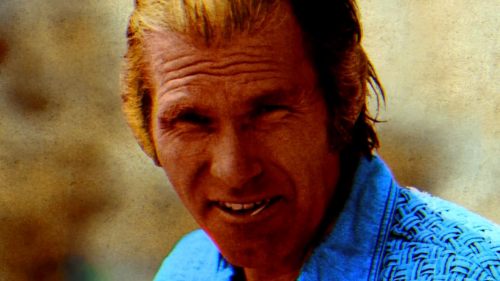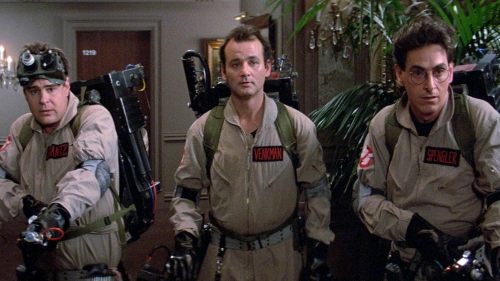Collins’ Crypt: Who Exactly Was JIGSAW Made For?
Some franchises don't need to worry about rebooting or retconning entire films if a sequel comes along after a lengthy hiatus. When Disney decided to make Star Wars: Episode VII, more than thirty years after Episode VI, there was little worry that the fans would have trouble remembering where things left off, as Star Wars fans aren't exactly famous for letting things go. But for most horror series, time off usually means that ongoing storylines will be abandoned, the previous film or films might be ignored entirely, or they'll just go ahead and remake the thing entirely - just ask Michael Myers or Jason Voorhees. Whenever a traditional sequel is attempted after a long delay, such as 2011's Scream 4 or 2017's Rings (both coming over a decade after their last installment), audiences tend to ignore the film, having moved on from these characters and stories long ago and not finding much excitement about the way they were revived. Time and time again it's been proven that it makes more sense to just start over - hate on Rob Zombie's Halloween remake all you want (I certainly have), but it's still one of the series' highest grossing films; there's no way a followup to Halloween: Resurrection would have grossed $80m.
But then there's Saw. Unlike the other franchises, Saw was sort of built on its continuity and ongoing narrative, with each sequel exciting fans not just because it was a new entry in a series they enjoyed, but also because it might shed new light on the older ones. As long as you're into it (and I recognize that a lot of people are not - don't worry, I'm not trying to convert you here), you'd probably agree that it's an endlessly rewatchable series and a very good fit for the sort of binge-viewing that is so popular nowadays thanks to Netflix and the like. When watching back to back, a lesser entry like Saw V becomes much less of a slog - as Evan pointed out, you didn't have to wait a year for something so low-key, and it's more like a lesser episode in a serialized TV show. With the constant flashbacks and new information, there's no such thing as a Saw entry you can just skip - future plot points will be lost on you, and you'll be seeing flashbacks to characters or events that you hadn't been properly introduced to. Sure, most of us agree that V and 3D were the low points of the series, but they still had their relevance, and I wouldn't dream of telling a newcomer to start with one of the sequels like I might for other franchises (i.e. if you're new to Friday the 13th and just want to know what the fuss is all about - skip the first few and start with Part 4).
So why, oh why oh why oh why, did Lionsgate and Twisted Pictures decide to bring this franchise back after a seven year gap with an entry that was aimed more at newcomers instead of series fans? I mean, I know the answer - to reach a wider audience - so I guess the real question is "Why did they think that would work?" Had they just taken a page from Platinum Dunes and presented a remake that in no way related to earlier entries, I could at least see the logical thinking behind it - it might be relatively quick (a mere thirteen years, though I guess if Spider-Man can be remade every five or ten years it's not so much of a stretch anymore) but it would give them a chance to start a whole new crazy mythology centered around John "Jigsaw" Kramer, a dying man who comes up with an ingenious plan to make people realize the value of their life by making them really fight for it (and by fight I mean harm themselves to get out of a death trap). While I think the series admirably found a way to keep Tobin Bell around after his character was offed in the third entry, I can see how the producers might have wished they hadn't dispatched him before the halfway point, as it got harder and harder to find ways to include him that wouldn't disrupt the established timeline (indeed, in the then-last film, 2010's Saw 3D, he only appeared in two scenes). And some folks never shined to Hoffman and found him too thuggish to be interesting, another thing they could "fix" by starting over, giving Jigsaw a more worthy successor this time around.

Alas, they didn't do that. Instead they made a film that fit with the others - it COULD have been titled Saw VIII, in other words - but was also careful to never actually rely on what happened in any of those films. In fact, you didn't even need to see the first film; as long as you know the basic concept of the Jigsaw character (and that he was dead) you're as caught up as you need to be. For those who didn't see it, the new film picks up in the present day; Jigsaw has been dead for ten years and no one's been found in a death trap for a long time (more on that soon). However, bodies keep popping up that seem to be the work of the long-dead villain - the victims even have his blood under their fingernails. Is he somehow still alive? And if it's not him, who is running the new game, in which five typical Saw victims (i.e. thieves and other assholes) are making their way through a trap-filled barn while being asked to confess their sins? If you're a Saw fan, you'd know there was a twist coming, and so when the gamemaster (in the familiar Pig mask) stepped out from behind the scenes to introduce himself to the last remaining players, taking off the mask to reveal a very much alive John Kramer, I knew two things simultaneously. One was that the game was taking place in the past, a la Saw II, and the other was that this movie was in no way going to try to satisfy long-time fans who were hoping for new developments with Dr. Gordon, Hoffman (who was left alive in Saw 3D, if you recall), etc.
See, while the other franchises were able to use supernatural means to extend their lease on life, reviving Jason with a lightning bolt and chalking Michael Myers' longevity up to a druid cult (!), this series had never even hinted at such workarounds - it's always been, for lack of a better word, grounded in reality, and it would be a dumb thing to change that approach now in the eighth entry. And we saw Kramer's demise in Saw III (his neck was given a pretty deep slash, and he was about to die of cancer anyway), not to mention the enjoyably over-the-top autopsy in Saw IV which seemed to exist primarily to convince the audience that he was indeed dead. So Jigsaw showing up, alive and well, wasn't exactly a mind-blowing twist to anyone who cared about these movies - and I'd be willing to bet the bulk of the paying audience were long-time fans, not newcomers. Again, these movies aren't that old; if you were born in 2004, when the first one came out, you'd still be too young to go see the newest one, and we're long past the age where it'd be difficult to catch up with a film or films that you missed theatrically - they're all available with minimal hassle to anyone who would be interested. Even if Jigsaw was the first film of the series that someone got to see in theaters, I'm guessing they would have prepped for the new one by watching all of the others on Netflix or whatever, rather than go in blind to a film that was marketed around "He's back!" In layman's terms, while it's conceivable that some people made Jigsaw their very first Saw movie, the majority of the audience had seen them, and therefore they should have been the film's target audience.
OK, so the big twist was a bit of a bust - but there were more reveals after it that made us want to go back and rewatch the others, right? Maybe Cary Elwes showed up in a surprise cameo to tie the film's events into the end of Saw 3D? Nope. In fact, barring a brief passing reference to Jill Tuck (Jigsaw's wife, who was a primary character in the last few entries) there is literally no mention of any of the series' roster of characters besides Jigsaw himself. Our protagonists are cops (as usual), but they don't mention the "still missing Hoffman" or anything like that - not even a memorial plaque to the several officers who died over the course of the previous seven films. Worse, at the end of Saw 3D we were led to believe that Gordon would be continuing John's legacy with the help of other people who survived their tests and came around to John's way of thinking, but they don't mention that either. So did Gordon abandon the cause shortly after Saw 3D's conclusion? Or are these cops simply not noticing it? Because if so, the idea that new Jigsaw-like victims are being found shouldn't be a big surprise to them, as Jigsaw's legion of minions would have racked up an impressive number of victims (or at least, disappearances) over the past seven years, no?

Ignoring this subplot, Hoffman, etc. would be forgivable (in time) if the film made up for it in its own way, but alas it did not. There were a few things about it that I liked, such as the idea of a groupie (Hannah Emily Anderson's coroner's assistant character, who belongs to a Jigsaw fan club on the "dark web" and recreates his traps as a hobby), and as a fan of the general vibe of these things, it was nice to be sitting in a theater watching one unfold again. But on that note, once the initial thrill wore off, I couldn't help but feel that the movie was kind of a pod person version of a Saw film. I don't know if it's because of its stand-alone nature or because the entire creative team had been replaced with people who had never worked on one of these films before (literally the first time that's been the case for a sequel), or maybe even both, but for most of the runtime I kept feeling like I was seeing a simulation of one instead of the real McCoy. It was like someone wrote down a bunch of things that a Saw movie should have - traps, cops, twists, Tobin Bell talking about the value of life - and made one without really getting what it was that made people keep coming back to these movies year after year. Even the "ten years ago" scenes have no payoff for anything else - we see Jigsaw and Logan make a reverse bear trap (the first?) together, but we don't get to see it in action, or any other kind of Easter Egg thing. The end of a proper Saw should make us excited for the next one - hell, even the "Final Chapter" had that much (Hoffman being trapped in the infamous bathroom), but this ended with a limp shrug. Not to mention a potential plot hole - Logan is a doctor, so if he was John's first apprentice, what the hell did John need Gordon for? Logan clearly passed whatever tests Jigsaw inflicted on him if he's still alive and carrying on his legacy in the present day, so where was he throughout the events from the other films? The other "___ was there all along" twists always recycled old footage to show us how it worked, but they don't bother with anything like it here - even when it finally tied into the series history, it still felt uncharacteristically disconnected, and in turn unsatisfying.
(Not to mention the fact that the whole point of the modern day scenes was a giant cheat. It's too complicated to explain for a non-viewer, but for those who have - there is no reason Logan needed lookalike bodies in the present day, as no one involved was watching the old game or knew what those victims looked like. It was a twist that had no in-movie purpose, existing only to fool the viewing audience, which is simply bad writing.)
So again, who was this movie for? I have yet to talk to a real fan of the series who was satisfied by it, and I'm not sure if I even know of a newcomer who was finally compelled to see what the big deal was. At least with Blair Witch (last year's attempt from Lionsgate to revive a dormant series) they had license to keep the narrative threads to a minimum - it's not like Blair Witch Project won audiences over with its complicated plot or major twists - all they had to do was make another scary found footage movie in the woods. But for Saw, a series that maintained its popularity because of its serialized nature and core cast of characters, there was no conceivable reason to believe that a largely standalone entry with an entirely new cast (Tobin only shows up in the final fifteen minutes or so) would appeal to the people who were asking for a new film in the first place. It's technically a success due to the usual low budget (the combined budgets for the first seven films was $65m - even the lowest grossing entry made more than that), but I doubt the producers will be excited about moving forward when the reception was so muted, especially when they'd likely have to admit they screwed up by course correcting and giving us "Saw 9" instead of "Jigsaw 2". Ironically, the film's refusal to tie itself into the others might produce a result they didn't expect: the hardcore fans will be as free to ignore it as everyone else.



